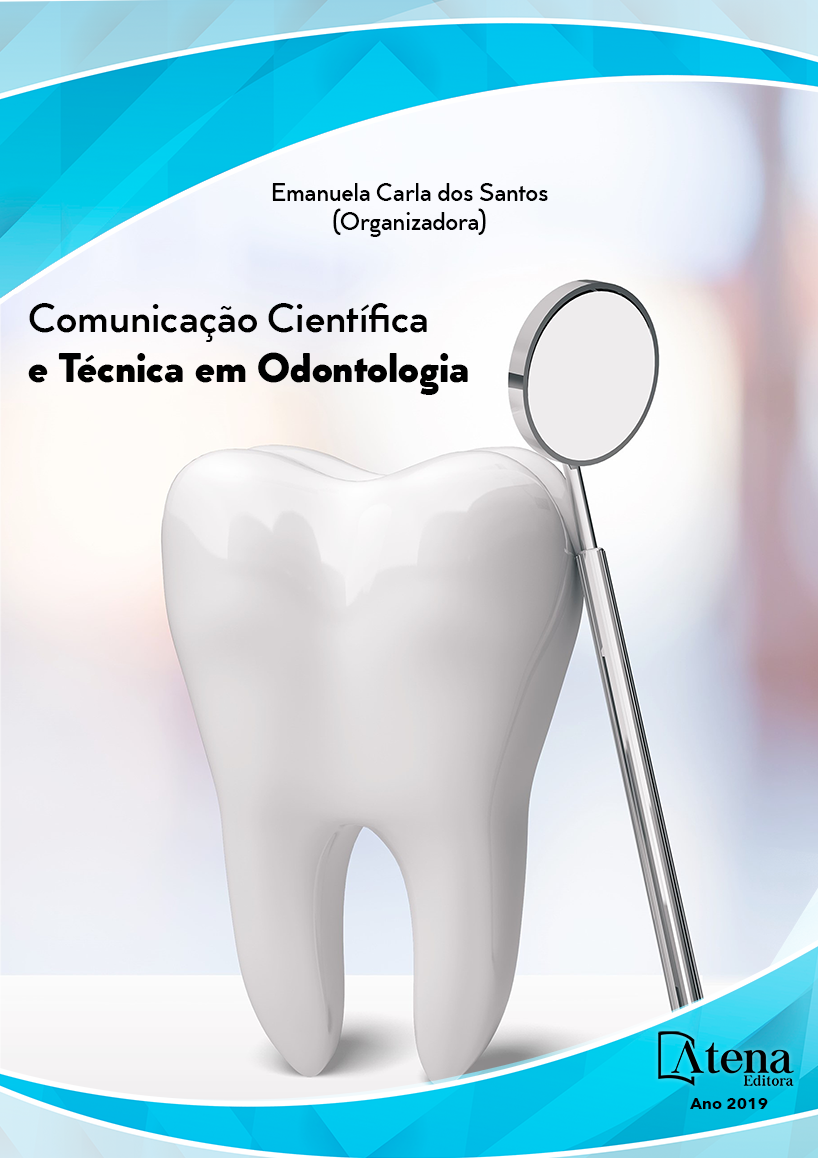
INFLUÊNCIA DA HIPOSSALIVAÇÃO NO PH BUCAL E NA PRESENÇA DE NITRITO NA SALIVA
O objetivo deste trabalho foi avaliar
através do teste bioquímico da saliva se a
hipossalivação afeta o pH da cavidade bucal
e correlacionar com a presença de nitritos na
saliva, uma vez que condições ideais, este
composto sofre conversão em nitrosaminas,
a qual é conhecidamente cancerígena. Foram
selecionados 80 voluntários divididos em 3
grupos (G1: não fumantes; G2: fumantes; G3:
controle), que responderam a um questionário
sobre nível socioeconômico, dieta e higienização
bucal. Através da expectoração por 5 minutos,
foi analisada na primeira amostra de saliva total
não estimulada o pH e a presença de nitrito
através de fita reagente. A seguir, a condição
de higiene oral foi avaliada através do Índice de
Placa Visível (IPV) e os participantes realizaram
escovação supervisionada. Após 2 horas,
colheu-se a saliva como no método anterior. O
volume salivar entre os grupos teve diferença
significativa e o grupo controle apresentou a
maior média com significância estatística. A
hipossalivação foi registrada em 10% da amostra
obtida e apresentou diferenças estaticamente
significativas em relação à presença de nitrito,
e mostrou que os resultados de traços de nitrito
apenas 3,85% tinha hipossalivação, e com
resultados positivo para nitrito 32,29% tinha
hipossalivação. Sendo assim, os resultados sugerem que a hipossalivação pouco
interferiu na presença de nitrito na saliva. Entretanto, o pH salivar mostrou-se mais
ácido nos casos de hipossalivação, sendo uma condição possível para que a cavidade
oral seja sítio de transformação de nitritos em nitrosaminas.
INFLUÊNCIA DA HIPOSSALIVAÇÃO NO PH BUCAL E NA PRESENÇA DE NITRITO NA SALIVA
-
DOI: 10.22533/at.ed.29619010418
-
Palavras-chave: Saliva. Nitrito. Carcinogênese.
-
Keywords: Saliva. Nitrite. Carcinogenesis.
-
Abstract:
The objective of this study was to evaluate the salivary biochemical test
if the hyposalivation affects the pH of the buccal cavity and correlate with the presence
of nitrites in the saliva, once the ideal conditions, this compound undergoes conversion
to nitrosamines, which is known carcinogen. Eighty volunteers were divided into three
groups (G1: non-smokers, G2: smokers, G3: control), who answered a questionnaire
on socioeconomic level, diet and oral hygiene. Through the sputum for 5 minutes, the
pH and the presence of nitrite through reagent tape were analyzed in the first sample
of total non-stimulated saliva. Next, the oral hygiene condition was evaluated through
the Visible Plate Index (IPV) and the participants underwent supervised brushing.
After 2 hours, the saliva was collected as in the previous method. The salivary volume
between the groups had a significant difference and the control group presented the
highest mean with statistical significance. The hyposalivation was recorded in 10% of
the sample obtained and presented statistically significant differences in relation to
the presence of nitrite, and showed that the results of nitrite traces only 3.85% had
hyposalivation, and with positive results for nitrite 32.29% had hyposalivation. Thus,
the results suggest that hyposalivation did not interfere greatly in the presence of nitrite
in the saliva. However, the salivary pH was more acidic in cases of hyposalivation,
being a possible condition for the oral cavity to be the site of transformation of nitrites
into nitrosamines.
-
Número de páginas: 15
- Mayara Ricardo Moraes
- Mariana de Lyra Vasconcelos
- Herculano Ramirez Floro Alonso
- Kelly de Moura Ferreira
- Lilianny Querino Rocha de Oliveira
- José de Amorim Lisboa Neto
- Camila Maria Beder Ribeiro Girish Panjwani
- Amanda Rafaela da Silva Amorim


